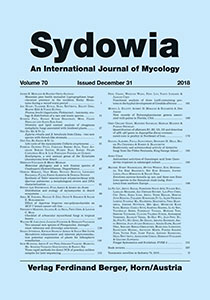
Distribution and ecology of myxomycetes in desert ecosystems Steven Lee Stephenson, Fuad Ameen & Ahmed Al-Sabri Sydowia 70: 89-97 Published online on May 2nd, 2018 Since myxomycetes (also called plasmodial slime molds or myxogastrids) are almost invariably associated with relatively moist conditions, one might not expect these organisms to occur in deserts. However, the number of species reported from those desert regions investigated to date is surprisingly high. Although the lack of moisture in desert environments undoubtedly places severe constraints on the growth and development of myxomycetes, there are several types of special microhabitats that retain moisture long enough to support these organisms. Moreover, myxomycetes appear to have evolved several different ecological strategies to reproduce successfully under what are often exceedingly dry conditions. Keywords: biodiversity, microhabitats, slime molds, xeric environments. |
 |